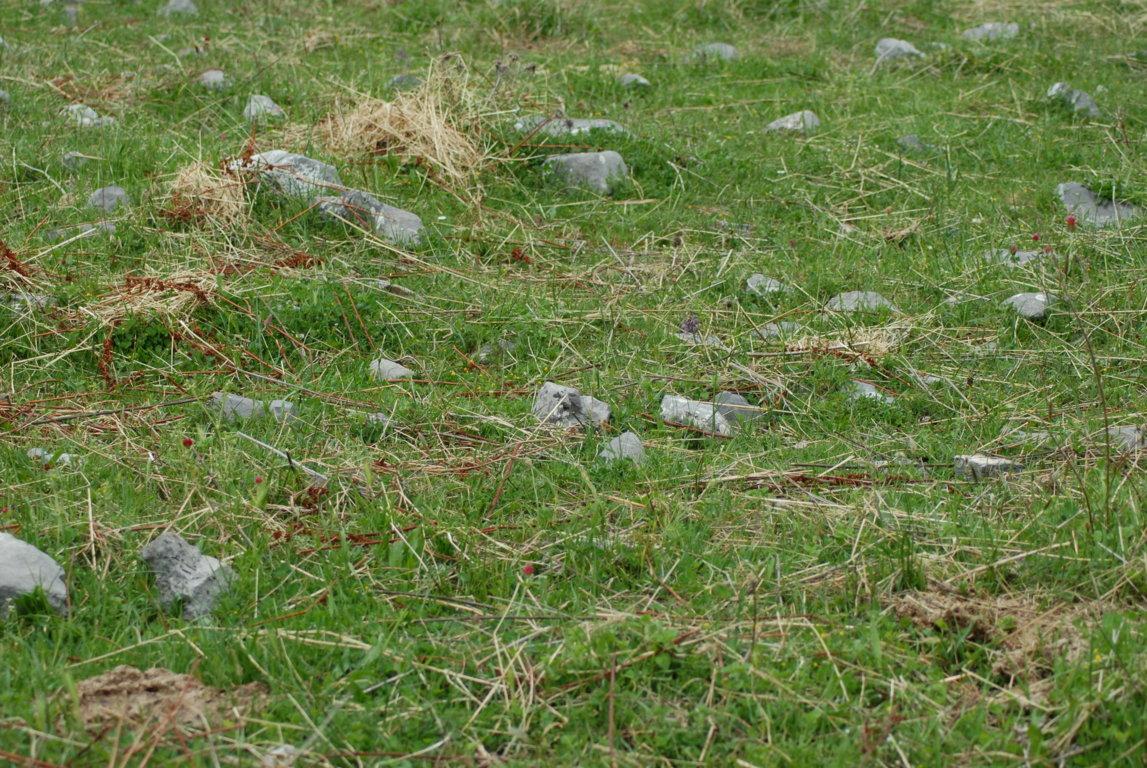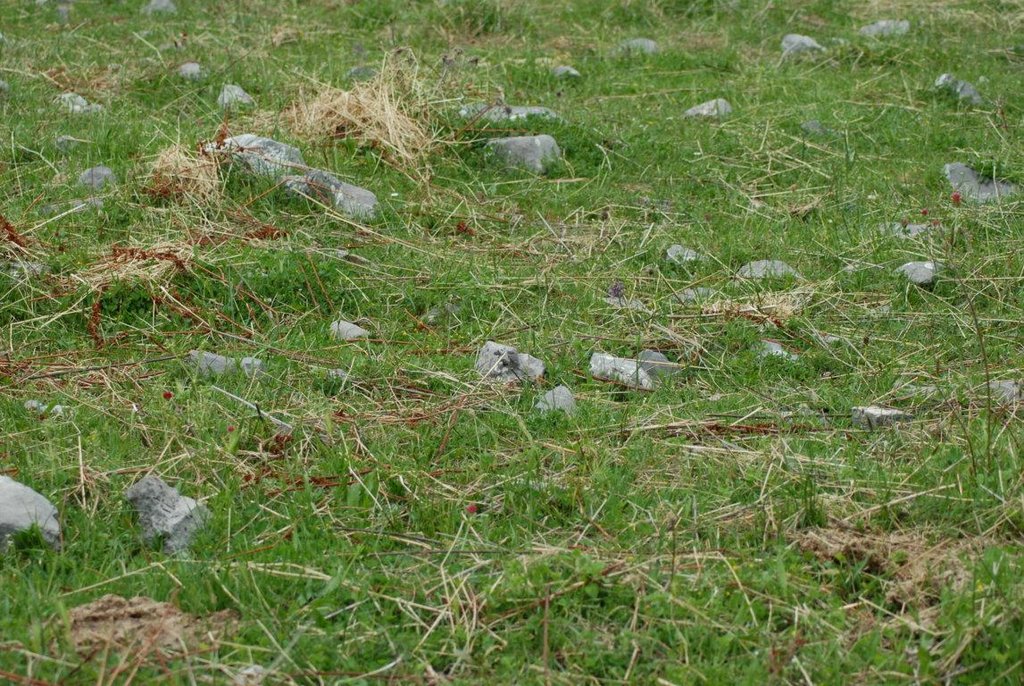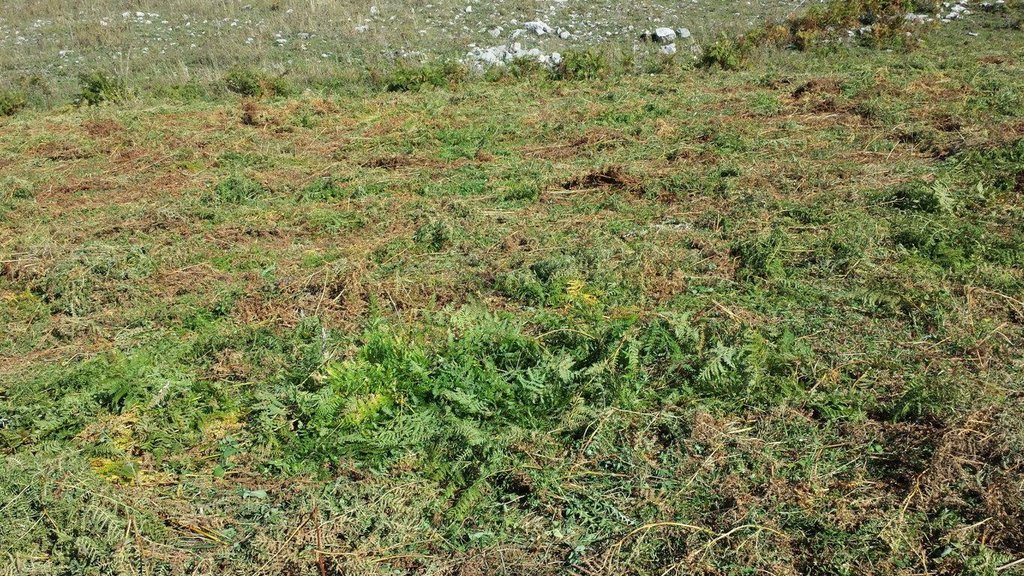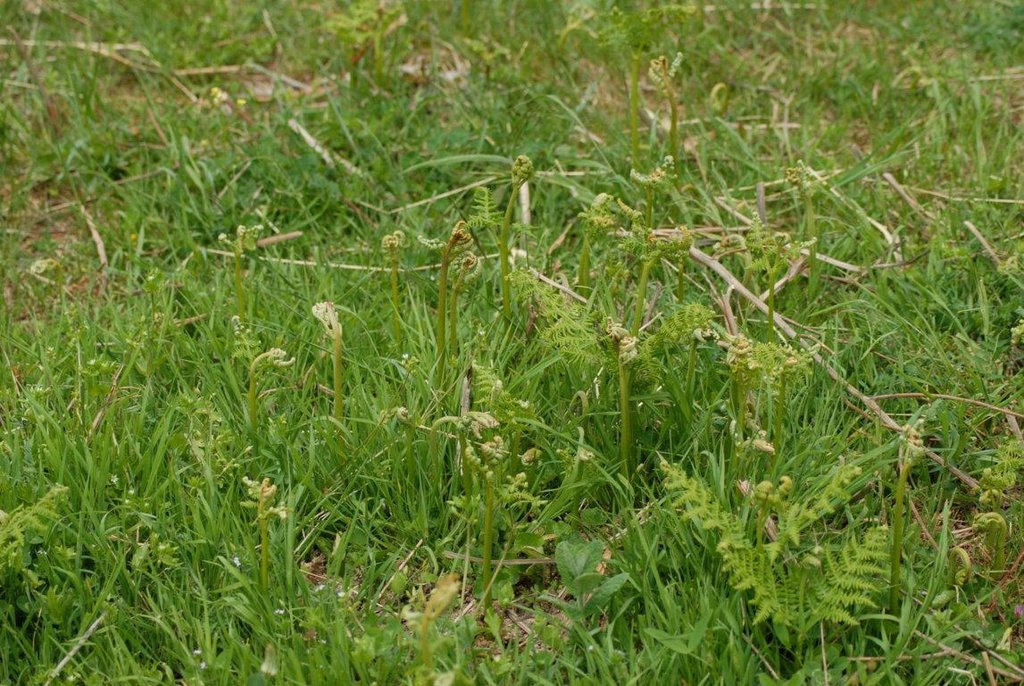Cutting of Ferns in degraded pastures to use as litter and fodder [意大利]
- 创建:
- 更新:
- 编制者: Velia De Paola
- 编辑者: –
- 审查者: Fabian Ottiger
technologies_1214 - 意大利
查看章节
全部展开 全部收起1. 一般信息
1.2 参与该技术评估和文件编制的资源人员和机构的联系方式
SLM专业人员:
Quaranta Giovanni
University of Basilicata
Via Nazario Sauro, 85, 85100 Potenza, Ita
意大利
有助于对技术进行记录/评估的项目名称(如相关)
Catastrophic shifts in drylands (EU-CASCADE)有助于对技术进行记录/评估的机构名称(如相关)
University of Basilicata - 意大利1.3 关于使用通过WOCAT记录的数据的条件
(现场)数据是什么时候汇编的?:
26/05/2014
编制者和关键资源人员接受有关使用通过WOCAT记录数据的条件。:
是
2. SLM技术的说明
2.1 技术简介
技术定义:
Cutting of wild ferns for fodder production and to mitigate pasture degradation.
2.2 技术的详细说明
说明:
Ferns are considered pioneer plants because Wherever there is fertile, acidic and well drained land Ferns (Pteridium sp.) preceed shrub species and the encroaching of forest species. Ferns that develop on pastures are fairly un-palatable to grazing livestock and completely disregarded by animals when the plant is fresh. The plant is thus usually mowed down to clear pastures and make way for more palatable species which would otherwise be suffocated by the presence of ferns. However, once cut down, dried and gathered, ferns can be used during the winter months (when the animals are in sheds or stables), both as a source of fibre and as bedding in deep litter housing systems (in place of the more common use of straw).
Purpose of the Technology: Improve pasture quality and gathering of fodder/ litter
Establishment / maintenance activities and inputs: End of summer/beginning of fall farmers use to cut ferns in the fields where they are diffused. Usually they use tractor whit a cutting equipment. As they get dry (it takes from 3 to 6 days according to air temperature and humidity) the ferns are collected and stored for winter use, either as fodder or litter housing.
Natural / human environment: The context of production is characterised by a medium level of mechanisation (only the most demanding operations are carried out using mechanical means), the production system is essentially mixed, a small part is destined for personal consumption whilst the bulk of production is destined for local markets. The property is predominantly
privately owned but also includes some public land, especially in the case of pasture land. Most farms in the area are livestock farms whilst the agricultural component is destined exclusively for private consumption. The technique is mainly applied on higher latitude pasture land (because of the presence of acidic soils) which are not particularly stony.
2.3 技术照片
2.5 已应用该技术的、本评估所涵盖的国家/地区/地点
国家:
意大利
区域/州/省:
Basilicata
有关地点的进一步说明:
castelsaraceno
2.6 实施日期
如果不知道确切的年份,请说明大概的日期:
- 50多年前(传统)
2.7 技术介绍
详细说明该技术是如何引入的:
- 作为传统系统的一部分(> 50 年)
3. SLM技术的分类
3.2 应用该技术的当前土地利用类型

牧场
粗放式放牧场:
- 半游牧/游牧
- 经营牧场
主要动物种类及产品:
Main animal species ranching: Sheep/Goats/Cow
注释:
Major land use problems (compiler’s opinion): Pasture degradation (shrub encroachment)
Major land use problems (land users’ perception): Pasture degradation (shrub encroachment)
Semi-nomadism / pastoralism: Shepherds use the area for summer grazing and move downhill in winter
Grazingland comments: the technique is applied in livestock farms which raise both cattle and sheep and goats seeing as
fresh ferns are un-palatable to all grazing species.
Type of grazing system comments: the technique is applied in livestock farms which raise both cattle and sheep and goats seeing as
fresh ferns are un-palatable to all grazing species.
3.3 有关土地利用的更多信息
该技术所应用土地的供水:
- 雨养
注释:
Water supply: Also mixed rainfed - irrigated
每年的生长季节数:
- 1
具体说明:
Longest growing period in days: 120Longest growing period from month to month: March to august
牲畜密度(如相关):
> 100 LU /km2
3.4 该技术所属的SLM组
- 畜牧业和牧场管理
- fodder production and mitigation pasture degradation
3.5 技术传播
具体说明该技术的分布:
- 均匀地分布在一个区域
如果该技术均匀地分布在一个区域上,请注明覆盖的大致区域。:
- 0.1-1 平方千米
3.6 包含该技术的可持续土地管理措施

植物措施
- V2:草和多年生草本植物

管理措施
- M5:物种组成的控制/变化
注释:
Main measures: management measures
Secondary measures: vegetative measures
Type of vegetative measures: scattered / dispersed
3.7 该技术强调的主要土地退化类型

生物性退化
- Bs:质量和物种组成/多样性的下降
注释:
Main type of degradation addressed: Bs: quality and species composition /diversity decline
Secondary causes of degradation: other human induced causes (specify) (Undergrazing, decrease in land use and land management)
3.8 防止、减少或恢复土地退化
具体数量名该技术与土地退化有关的目标:
- 修复/恢复严重退化的土地
注释:
Secondary goals: rehabilitation / reclamation of denuded land
4. 技术规范、实施活动、投入和成本
4.2 技术规范/技术图纸说明
Technical knowledge required for land users: low
Main technical functions: promotion of vegetation species and varieties (quality, eg palatable fodder)
Scattered / dispersed
Vegetative material: G : grass
Number of plants per (ha): 150000
Control / change of species composition
4.3 有关投入和成本计算的一般信息
其它/国家货币(具体说明):
euro
注明美元与当地货币的汇率(如相关):1美元=:
0.74
注明雇用劳工的每日平均工资成本:
81.08
4.6 维护/经常性活动
| 活动 | 措施类型 | 时间/频率 | |
|---|---|---|---|
| 1. | Cutting and gathering of fern | 植物性的 | Once a year |
| 2. | Cutting and gathering of ferns | 管理 | Once a year |
4.7 维护/经常性活动所需要的费用和投入(每年)
| 对投入进行具体说明 | 单位 | 数量 | 单位成本 | 每项投入的总成本 | 土地使用者承担的成本% | |
|---|---|---|---|---|---|---|
| 劳动力 | Cutting and gathering of fern | ha | 1.0 | 162.16 | 162.16 | 100.0 |
| 设备 | Cutting and gathering of fern | ha | 1.0 | 108.1 | 108.1 | 100.0 |
| 技术维护所需总成本 | 270.26 | |||||
注释:
Machinery/ tools: Tractor with mower which is commonly owned for medium to large livestock farms for the purpose of haying., tractor with mower which is commonly owned for medium to large livestock farms for the purpose of haying.
4.8 影响成本的最重要因素
描述影响成本的最决定性因素:
The technique does not require specific investment given that the necessary equipment is usually already available on farm in the case of medium to large size livestock farms. The work is carried out in autumn when the machinery are not generally in use as haying operations are usually finished in the summer months.
If the farm does not own suitable machinery it can be rented at a cost of €40 per hour.
5. 自然和人文环境
5.1 气候
年降雨量
- < 250毫米
- 251-500毫米
- 501-750毫米
- 751-1,000毫米
- 1,001-1,500毫米
- 1,501-2,000毫米
- 2,001-3,000毫米
- 3,001-4,000毫米
- > 4,000毫米
指定年平均降雨量(若已知),单位为mm:
1519.00
有关降雨的规范/注释:
68% in winter and 15% in summer
农业气候带
- 半湿润
Thermal climate class: temperate
5.2 地形
平均坡度:
- 水平(0-2%)
- 缓降(3-5%)
- 平缓(6-10%)
- 滚坡(11-15%)
- 崎岖(16-30%)
- 陡峭(31-60%)
- 非常陡峭(>60%)
地形:
- 高原/平原
- 山脊
- 山坡
- 山地斜坡
- 麓坡
- 谷底
垂直分布带:
- 0-100 m a.s.l.
- 101-500 m a.s.l.
- 501-1,000 m a.s.l.
- 1,001-1,500 m a.s.l.
- 1,501-2,000 m a.s.l.
- 2,001-2,500 m a.s.l.
- 2,501-3,000 m a.s.l.
- 3,001-4,000 m a.s.l.
- > 4,000 m a.s.l.
5.3 土壤
平均土层深度:
- 非常浅(0-20厘米)
- 浅(21-50厘米)
- 中等深度(51-80厘米)
- 深(81-120厘米)
- 非常深(> 120厘米)
土壤质地(表土):
- 细粒/重质(粘土)
表土有机质:
- 中(1-3%)
如有可能,附上完整的土壤描述或具体说明可用的信息,例如土壤类型、土壤酸碱度、阳离子交换能力、氮、盐度等。:
Soil fertility is medium-low
Soil drainage/infiltration is good
Soil water storage capacity is medium
5.4 水资源可用性和质量
地下水位表:
5-50米
地表水的可用性:
中等
水质(未处理):
良好饮用水
关于水质和水量的注释和进一步规范:
Availability of surface water is medium (minimum during month of September and October)
5.5 生物多样性
物种多样性:
- 中等
5.6 应用该技术的土地使用者的特征
生产系统的市场定位:
- 商业/市场
非农收入:
- 收入的10-50%
相对财富水平:
- 平均水平
个人或集体:
- 个人/家庭
性别:
- 女人
说明土地使用者的其他有关特征:
Land users applying the Technology are mainly common / average land users
Difference in the involvement of women and men: Active farmers are present only males; women are not actively involved in land management
Population density: 10-50 persons/km2
Annual population growth: negative; 2%
90% of the land users are average wealthy.
10% of the land users are poor.
Off-farm income specification: Most of the off farm income derives from public sector, i.e. Municipality, Mountain Community, Region and other public bodies. Very few farmer members run local shops or handcraft.
5.7 应用该技术的土地使用者拥有或租用的平均土地面积
- < 0.5 公顷
- 0.5-1 公顷
- 1-2 公顷
- 2-5公顷
- 5-15公顷
- 15-50公顷
- 50-100公顷
- 100-500公顷
- 500-1,000公顷
- 1,000-10,000公顷
- > 10,000公顷
这被认为是小规模、中规模还是大规模的(参照当地实际情况)?:
- 小规模的
注释:
Considering communal land used by farmers
5.8 土地所有权、土地使用权和水使用权
土地所有权:
- 社区/村庄
- 个人,有命名
土地使用权:
- 社区(有组织)
- 个人
5.9 进入服务和基础设施的通道
健康:
- 贫瘠
- 适度的
- 好
教育:
- 贫瘠
- 适度的
- 好
技术援助:
- 贫瘠
- 适度的
- 好
就业(例如非农):
- 贫瘠
- 适度的
- 好
市场:
- 贫瘠
- 适度的
- 好
能源:
- 贫瘠
- 适度的
- 好
道路和交通:
- 贫瘠
- 适度的
- 好
饮用水和卫生设施:
- 贫瘠
- 适度的
- 好
金融服务:
- 贫瘠
- 适度的
- 好
6. 影响和结论性说明
6.1 该技术的现场影响
社会经济效应
生产
作物生产
饲料生产
饲料质量
生产区域
社会文化影响
Improved livelihoods and human well-being
生态影响
生物多样性:植被、动物
栖息地多样性
6.2 该技术的场外影响已经显现
对邻近农田的破坏
6.3 技术对渐变气候以及与气候相关的极端情况/灾害的暴露和敏感性(土地使用者认为的极端情况/灾害)
渐变气候
渐变气候
| 季节 | 气候变化/极端天气的类型 | 该技术是如何应对的? | |
|---|---|---|---|
| 年温度 | 增加 | 好 |
气候有关的极端情况(灾害)
气象灾害
| 该技术是如何应对的? | |
|---|---|
| 局地暴雨 | 好 |
| 局地风暴 | 好 |
气候灾害
| 该技术是如何应对的? | |
|---|---|
| 干旱 | 好 |
水文灾害
| 该技术是如何应对的? | |
|---|---|
| 比较和缓的(河道)洪水 | 好 |
其他气候相关的后果
其他气候相关的后果
| 该技术是如何应对的? | |
|---|---|
| 缩短生长期 | 好 |
注释:
In order to make ferns dry up in such environment it would be possible to cut them during last stage of summer rather then early autumn to avoid possible persistent rain that would not allow ferns to dry up.
6.4 成本效益分析
技术收益与技术建立成本相比如何(从土地使用者的角度看)?
短期回报:
轻度消极
长期回报:
非常积极
技术收益与技术维护成本/经常性成本相比如何(从土地使用者的角度看)?
短期回报:
非常积极
长期回报:
非常积极
注释:
In the short term the advantage is an increase in surface and quality of valuable pastures. for the grazing animals. In the long term the application of this technique is important to prevent shrub encroachment.
6.5 技术采用
在所有采用这项技术的人当中,有多少人是自发地采用该技术,即未获得任何物质奖励/付款?:
- 90-100%
注释:
100% of land user families have adopted the Technology without any external material support
There is a moderate trend towards spontaneous adoption of the Technology
6.7 该技术的优点/长处/机会
| 土地使用者眼中的长处/优势/机会 |
|---|
| ferns are used in winter as fodder which absorbs the cost of cutting and gathering ferns from pastures and also helps improve pasture quality. |
| 编制者或其他关键资源人员认为的长处/优势/机会 |
|---|
|
the cutting of ferns is a simple, low-cost operation which brings great benefits to livestock farms. How can they be sustained / enhanced? Greater exchange of information amongst target farmers on the benefits of clearing pastures. |
链接和模块
全部展开 全部收起链接
无链接
模块
无模块





